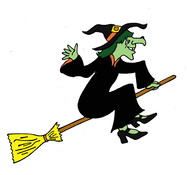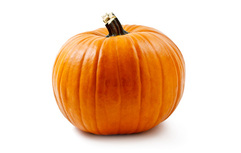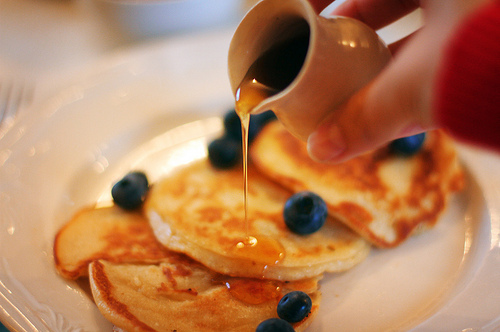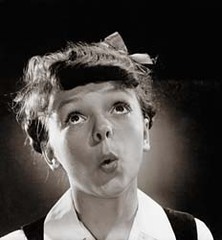Words to Live By
Deadline: Monday, December 3, 2012 by 08:00
 Reinforcing the lesson on thankfulness and our wonderful Thanksgiving luncheon by Student Council, I am posting a video from the American charity, United Way, on this week's blog. your assignment is the following:
1. Pick ten of the vocabulary words below that you will see in the video and define them on your blog post:
| | - a nap
- (to) deprive
- hope
- thankful
- afraid
- (to) interrupt
- (to) tailgate
- (to) wave
- outrageous
- attire
- (to) judge
- success
- integrity
- maple syrup
- homemade
- brownies
- fruitcake
- (to) nag
- obedience
- (to) postpone
- reputation
- blessings
- (to) whistle
- (to) advocate
2. Write a small commentary of a minimum of 100 words on what you liked or did not like about the video. What piece of advice did you like the best? Why? |
Back to Africa
Deadline: Monday, November 19, 2012 by 08:00
 Our African map in the classroom needs to be finished as some of your country drawings were too messy or not to scale. So if your country has not been featured on the wall, that means that is was rejected for display.
Those who do not have their African country on the wall also means they received low marks for not following directions from the previous blog post on creating a African country.This week's blog is a blog of persuasion. Persuasion is the act of convincing or changing someone else's mind, opinion, beliefs, or actions. Take a look at the photo of the apple. How do you interpret it? Is the apple on the left persuading the apple on the right to be happy? Or is the apple on the right persuading the other apple that he or she is "happy" even when it is not the case? Both interpretations are matters of persuasion.
Now, go back to your African country and persuade me that your country is the best in the class to visit. There are over 50 African countries to choose from for my next holiday. Will I pick yours?
Your blog post this week should:
- be a minimum of 100 words in length
- feature the best highlights in your African country (the climate, people, food, music, sports, animals, national parks, monuments, etc.)
- be creative and of course, persuasive!
If your country has had problems with natural disasters, famine, civil war, or political problems, you will have to be even more convincing as I may not want to go there. Show the very best side to your country for me to consider it. Remember, it does not matter how small or big your country is, there is always something you can find that could bring an adventurous tourist like me to come and visit.Good luck to persuade me to visit your African country!
In Honor of Halloween
Deadline: Monday, November 5, 2012 by 08:00
 Since witches have been the theme of our Halloween festivities for October 2012, this blog post is in connection to the symbolism behind a witch's wardrobe and appearance.
Please read the directions below carefully before you post on this week's blog.1. The paragraphs below all connect to the secret symbolism of a witch's wardrobe and appearance. Write the missing word in regards to an item or appearance of a witch in the blog post. (See my example post for assistance).
2. All boldfaced words are vocabulary words. Write a short definition or synonym for each word on the blog post. 3. Can you find where I found this information? Do a search online for the article and post the following information on the blog:- The title of the article
- The author of the article
- The weblink to the article
4. Finally, write what you thought about the article and the research behind the symbolism behind a witch's wardrobe and appearance. (For example: What was the most interesting fact from the article? Did you know any of this information before? Is there a part of the article worth researching further?)
Item number one: WITCH __ __ __ __Some of the earliest images of witches feature them wearing brimless, cone-shaped __ __ __ __, similar to the __ __ __ __ we associate with wizards today. In pagan societies, these __ __ __ __ were reserved for shamen, who were spiritual leaders or healers who used natural herbs to cure disease. Witches were valuable members of pagan communities, because they knew a great deal about the Earth and how to use its resources.
During the Victorian era, illustrations in children's books added a brim to the witch's __ __ __ . These __ __ __ __ were often used to identify evil characters and the __ __ __ __ quickly became a symbol of a wicked witch.
Item number two: WITCH __ __ __ __ __ __In medieval Europe, everyone owned a __ __ __ __ __ to keep their home clean. __ __ __ __ __ __ weren't associated with witchraft until 1453, when a Frenchman, Guillaume Edelin, confessed under torture that he had made a pact with the Devil that allowed him to fly around on his __ __ __ __ __. During a wave of witch hysteria, investigators would torture alleged witches and try to get them to confess to flying on
__ __ __ __ __ __. Some did, no doubt to escape the torture, adding the __ __ __ __ __ to the witch legend.
Wiccans, who are modern witches, use __ __ __ __ __ __ in some ceremonies to represent the air element. A Wiccan __ __ __ __ __, known as a besom, is a rounded __ __ __ __ __ made with twigs rather than straw. Sweeping with the besom removes negative energy from a room.Item number three: WITCH __ __ __ __ __ __ __ __ __
The __ __ __ __ __ __ __ __ is a symbol of fertility in many non-Christian faiths, including European pagan religions and some African religions. It's also a practical object that can be used to create potions.
The association of __ __ __ __ __ __ __ __ __with witches stems largely from William Shakespeare's Macbeth, which opens with a trio of witches creating a mysterious potion in a __ __ __ __ __ __ __ __. Although much of Shakespeare's view of witches was intended only for dramatic effect, it became the popular image of witches during the Elizabethan era.
Witch's appearance: __ __ __ __ __ and __ __ __ __ __ __ __ __ __From the beginning, literature portrayed witches as shriveled, ancient hags filled with superstition and anger at the world. Some writers describe witches as near-skeletal, with leathery skin pulled tight over their bones. __ __ __ __ __ were a common affliction in the Middle Ages, but many people still saw them as evidence of disease or unclean living. As with witch hats, Victorian-era illustrators would use __ __ __ __ __ to represent evil people.
It's interesting to note that the Malleus Maleficarum, a handbook for the detection and prosecution of witches published in 1487, explains that witches aren't all elderly, haglike or covered with __ __ __ __ __ . Beautiful young women are among the most dangerous witches in this book, because they can lure men to their doom.
The idea of witches with __ __ __ __ __ __ __ __ __ doesn't take hold until the 20th century. The first __ __ __ __ __-__ __ __ __ __ __ __ witch appears in the film version of The Wizard of Oz, even though the original book never describes The Wicked Witch of the West with __ __ __ __ __ __ __ __ __ . This was most likely a decision made by the filmmakers to show off the potential of brand-new color film.
The color __ __ __ __ __ has been associated with witches since the time of the Ancient Celts. In Celtic tradition, __ __ __ __ __ is the color of the fairies, with whom witches shared a strong association. Witches were depicted wearing __ __ __ __ __ as a symbol of their otherworldly nature.
Bonus House Point Challenge
 For those who would like a House point challenge worth 1oo points, can you find the answers to the questions below regarding the world's largest pumpkin? Please write your answers on this week's blog post.
Thank you, Elliott, for providing the questions for this House point challenge!
1. What is the weight of the world's largest pumpkin as of October 2012?
2. In which state was the world's biggest pumpkin grown in the United States?
3. Who is the owner of the world's biggest pumpkin?
4. Find a picture of the pumpkin and the owner online and post the weblink on the blog post.
|







 RSS Feed
RSS Feed